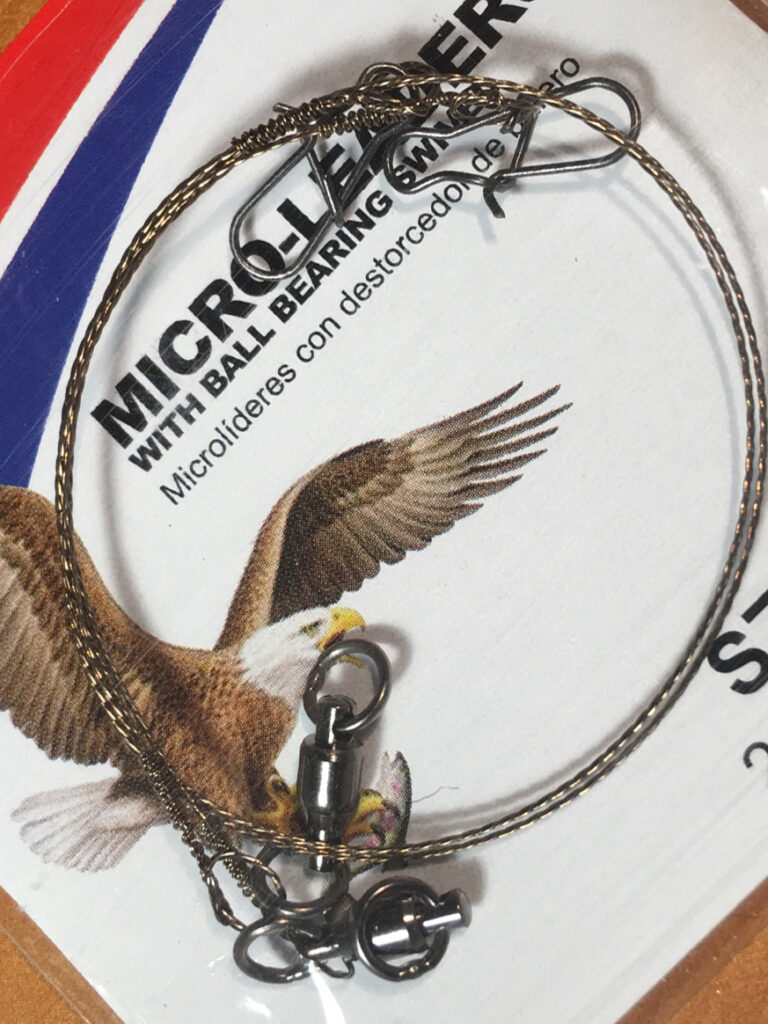
Our Outdoors: It’s Terminal
By Nick Simonson
In the process of fishing, I’ve seen a good deal and done a lot of it. I’ve read a ton, watched some more, and through trial and error learned quite a bit, but most days it feels like it’s never enough. Through trial-and-error with new ideas, patterns, and processes, I trade frustration for elation and vice versa on a variety of streams and lakes for the seemingly unlimited species available. Perhaps the greatest leap in all of that learning which any angler makes is gaining the understanding of how and when to utilize terminal tackle. I can recall the days as a youngster of hooking a jig into a 12-inch steel leader, with the hope or the fear that a pike might bite me off. When I encounter the same set-up from time to time used by others, I can often tell they are in that same point of their angling journey.
Whether it’s a direct connection to a jig, fly or plain hook via a palomar knot, utilizing a swivel to reduce line twist on an in-line spinner or crawler harness behind a bottom bouncer, or even occasionally slapping on a wire leader to prevent bite-offs from toothy pike, there is a time for all terminal tackle, and a time when none is the best option. Figuring out when is akin to the Great Filter in Fermi’s Paradox, where certain casual fishermen willing to take the leap enter the ranks of those more devout anglers, leaving the world of what they didn’t know about their line additions behind them.
Direct Connect
Not every fish is toothy. Not every species takes to a trolled spoon. In fact, the most effective lure for just about any type of fish is some sort of jig in some configuration. Walleyes, crappies, smallmouth and largemouth bass and most trout are top-tier targets for jigs. Jigs should be tied directly to the line, utilizing a palomar knot, improved clinch knot, or similar strong option. There should never be a swivel with a snap nor a stretch of wire leader for these lures. For these fish, which in one degree or another require some sensitivity and a direct connection to the action below for an ideal presentation, a jig tied directly to the line is the best way to go.

Looking Snappy
Quick-change snaps, clips, and clasps – whether on their own or with a swivel attachment – allow for a rapid exchange of lures to find a pattern that works. Whether trolling crankbaits on a favorite stretch of gravelly lake bottom for summer walleyes or in other situations where fish aren’t going to get a good look at the intricacies of an offering, a quick-change clasp can make things easier, and in some cases accent the action of a lure. The open loop of a quick-change lure clip gives crankbaits a bit more wobble than a direct tie and allows for faster substitutions than tying a Rapala knot, cutting and retying again. Additionally, smaller no-knot snaps and clips that connect directly to the end of a line can aid anglers with aging eyes in changing smaller options out – including flies and tinier jigs – while still not having as much of a presence for fish to notice.

Take a Turn
Swivels have their place in an assortment of terminal tackle as well and are primarily used to prevent line twist. If you’ve ever unhooked a walleye from a spinner rig trolled behind a bottom bouncer with a bum swivel, you know how important they can be. When that line recoils into twists and loops, it’s evident that a swivel isn’t doing its job, or one needs to be added to reduce the spinner blade’s effects. In those situations where active, bladed or spinning lures will be applying excessive torque to a line, having a selection of swivels to tie into the presentation will help keep everything straight and functioning properly. Against any weight – be it a flattened teardrop on a sturgeon rig, a pyramid on a catfish setup, or a walking sinker on a Lindy rig for walleyes – a swivel can also serve as the bumper between the main line and the business end of the presentation.

Lead On
Finally, the use of a steel leader, as suggested above, should be employed in limited circumstances, where the odds of a bite off by pike, muskies or other toothy critters is a confirmed hazard for that particular fishing outing. For those other more wary and less toothy species, they serve only as a distraction which discourages bites, from the highly visible wire to the large snaps and swivels they employ. Again, they’re great for pike, but not much else.
In the enigma that is the art of angling, all generalizations are wrong, including this one. But knowing when and where to tweak how things look at the end of the line, be it with the addition of a piece of terminal tackle or the removal of it, will help bring a better understanding of the process. Through those lessons learned, it’s easier to make the jump and end up with more success in any open water situation one might encounter this season…in our outdoors.
